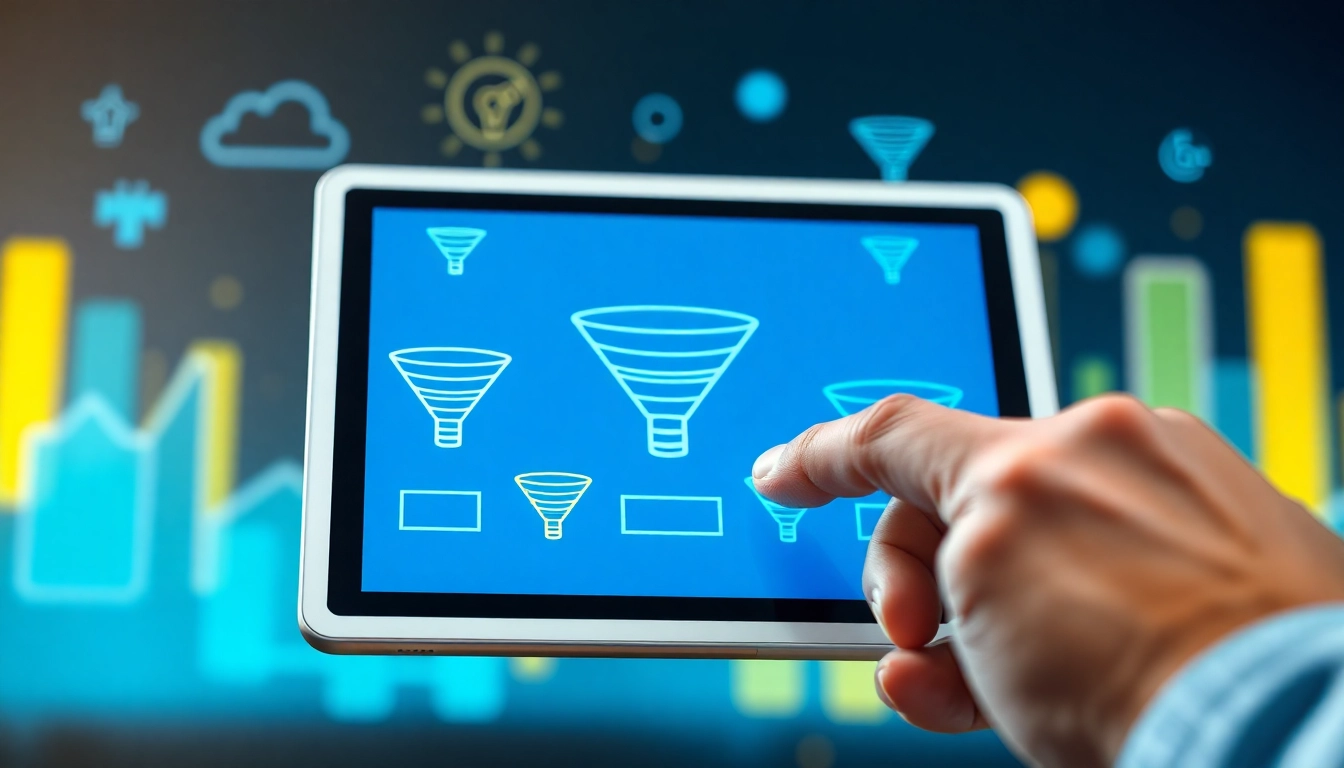Understanding Funnelology and Its Importance
In the realm of digital marketing, understanding the intricacies of Funnelology is paramount to achieving substantial growth and profitability. At its core, Funnelology delves into the creation, management, and optimization of sales funnels, which serve as crucial pathways through which potential customers transition from awareness to a final purchase. The significance of mastering these concepts in a landscape where consumers are inundated with choices cannot be overstated.
What is Funnelology?
Funnelology is the study of sales funnels, focusing on the various stages a potential customer navigates when making a purchase decision. At its essence, a funnel represents the customer journey—starting from the moment they become aware of a product, through to the final purchase. The funnel is typically segmented into stages such as awareness, interest, decision, and action. This structured approach not only helps businesses identify potential drop-off points but also optimizes their marketing efforts to improve conversion rates.
The Role of Sales Funnels in Business Success
Sales funnels are critical in mapping out the customer journey and identifying how to effectively guide potential buyers towards making a purchase. They are instrumental in understanding consumer behavior, facilitating targeted marketing efforts, and ultimately driving sales. By analyzing each stage of the funnel, businesses can tailor their strategies to address specific customer needs and preferences, thereby increasing the likelihood of conversion.
Common Misconceptions about Funnelology
Despite its growing importance, there are several misconceptions surrounding Funnelology. One prevalent myth is that it only encompasses the technical aspects of building a funnel, neglecting the psychological and strategic elements that influence consumer behavior. Another misconception is that once a funnel is created, the work is done; in reality, continuous testing and optimization are essential for sustaining funnel performance over time.
Key Components of Effective Funnels
Stages of a Sales Funnel Explained
Understanding the stages of a sales funnel is foundational to effective Funnelology. Typically, these stages include:
- Aware: Potential customers first become aware of a product or service.
- Interest: They show interest by seeking more information or engaging with the brand.
- Decision: At this stage, prospects weigh their options and consider specific solutions.
- Action: Finally, they take action by making a purchase or completing the desired goal.
Recognizing these stages allows businesses to deploy targeted strategies at each point, thereby enhancing their chances of conversion.
Essential Elements for Each Funnel Stage
Each stage of the funnel requires specific elements to be effective:
- Aware: High-quality content marketing such as blogs, social media posts, or podcasts can capture initial interest.
- Interest: Engaging lead magnets, such as eBooks or webinars, can nurture interest and gather information on potential customers.
- Decision: Detailed product comparisons, testimonials, and case studies can influence decision-making.
- Action: Clear calls-to-action (CTAs) and limited-time offers can encourage users to complete their purchase.
How to Measure Funnel Effectiveness
Measuring the effectiveness of a funnel involves analyzing key performance indicators (KPIs) at each stage:
- Conversion Rate: The percentage of visitors who complete the desired action within the funnel.
- Drop-off Rate: The percentage of users who exit the funnel at each stage, highlighting potential issues that require attention.
- Customer Acquisition Cost (CAC): The total cost involved in acquiring a single customer through the funnel, influencing overall profitability.
Regularly monitoring these metrics enables businesses to make informed decisions to refine their funnels and maximize conversions.
Building Your First Funnel: A Step-by-Step Guide
Identifying Your Audience and Goals
Before constructing a funnel, clearly identify your target audience and define your goals. Understanding your audience’s demographics, preferences, and pain points is critical to tailoring the funnel stages effectively. Utilize surveys, social media insights, and analytics tools for data collection.
Selecting the Right Funnel Type
Different types of funnels serve different purposes—whether for lead generation, sales, product launches, or membership subscriptions. Selecting the right type hinges on your goals and audience comprehension. Common funnel types include:
- Lead Generation Funnel: Designed to capture leads using free resources.
- Sales Funnel: Focused on generating sales through targeted messaging and promotions.
- Webinar Funnel: Used to promote and host informative webinars that convert attendees into leads or customers.
Tools to Build and Optimize Your Funnel
Various tools streamline the funnel-building process by simplifying design, tracking, and optimization. Consider tools such as:
- Landing Page Builders: Platforms like ClickFunnels or Leadpages can help in creating optimized landing pages.
- Email Marketing Software: Tools like Mailchimp or ConvertKit are essential for nurturing leads through automated emails.
- Analytics Tools: Google Analytics and Hotjar provide valuable data on user behavior and funnel performance.
Combining these tools can facilitate the effective construction and optimization of your funnels.
Advanced Funnel Strategies for Growth
Segmenting Your Audience for Better Results
Segmentation is paramount in ensuring that your funnels resonate with distinct audience groups. By dividing your audience based on characteristics such as behavior, demographics, or interests, you can tailor content and offers to meet specific needs. This personalization increases the relevance of your marketing efforts, enhancing engagement and conversion rates.
Leveraging Data to Improve Funnel Performance
Using data analytics is critical to understanding how users interact with your funnel. Regularly analyze user paths, engagement rates, and feedback to identify bottlenecks or friction points. Data-driven decisions, such as adjusting messaging or re-evaluating calls-to-action, have the power to significantly bolster funnel effectiveness.
Case Studies of Successful Funnel Implementations
Examining successful funnel implementations can provide insights into effective strategies. For example, a common scenario is the successful use of lead magnets, where businesses offer valuable free content in exchange for email subscriptions. This tactic not only builds a robust email list but also nurtures leads, gradually moving them down the funnel toward a purchase.
A/B Testing and Continuous Improvement in Funnelology
What is A/B Testing in Funnelology?
A/B testing, or split testing, involves running two variations of a funnel element to determine which performs better. This could involve testing different headlines, images, calls-to-action, or even entire landing pages. A/B testing allows marketers to make data-backed decisions, optimizing the funnel for the best possible user experience and conversion rate.
Best Practices for Effective A/B Testing
Successful A/B testing necessitates adherence to certain best practices:
- Test One Element at a Time: Isolate the variable you’re testing to attribute differences in performance directly to that change.
- Utilize a Large Sample Size: Ensure your test runs long enough to gather statistically significant data.
- Monitor the Right Metrics: Clearly define success metrics and analyze performance based on these criteria.
Iterating Based on Test Results for Funnel Optimization
After analyzing A/B test results, implementing changes based on data-driven insights is crucial. Continuous iteration helps refine the funnel, addressing user behavior patterns and preferences. Regularly cycling through testing, analyzing, and refining fosters a culture of improvement, ensuring that your funnels remain effective over time.
Conclusion
In conclusion, mastering the principles of Funnelology is indispensable in the digital marketing landscape. By understanding the nuances of funnels, from their stages to the tactics for optimization, businesses can effectively navigate the complexities of consumer behavior, driving substantial growth and enhancing profitability. With a commitment to continuous improvement and an analytical approach to testing, marketers can ensure their funnels operate at peak performance, leading to long-term success.



